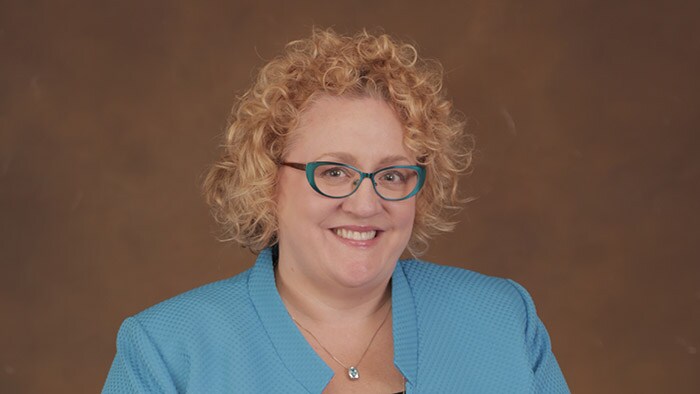By 2030, 1 in 5 Americans will be older than 65, the equivalent of 73 million people [1]. Yet industry-wide efforts to cater for this older generation continue to lag behind its exponential increase. With COVID-19 affecting elderly communities at disproportionate rates [2], it is more imperative than ever before to think critically about how to serve the older demographic. Old age often brings with it chronic diseases such as heart disease, cancer, stroke, diabetes and COPD (chronic obstructive pulmonary disease). In America, nearly 80% of older adults suffer from one or more chronic diseases [3]. Today, those demographics are served by a range of Philips telehealth-enabled innovations ranging from home monitoring solutions based on unobtrusive wearable biosensors to advanced therapeutic devices for COPD patients. This topic of how to best serve the aging population was the focus of a recent Fortune Global Forum virtual panel discussion, which explored how businesses can tap into the opportunities these changing demographics present, and what challenges those in the senior care industry should proactively prepare for. As an invited panelist, Cindy Gaines, Chief Nursing Officer and Clinical Transformation Leader for Connected Care at Philips, shared insights on how providers can tailor healthcare delivery towards a senior population that largely wishes to age in place [4]. Her insights focused on telehealth solutions, something that has become especially relevant in a pandemic where the aging population represents one of the groups most at risk. She also debunked stereotypes about older generations’ desires and capabilities when it comes to technology, offered ideas and solutions for how hospitals and healthcare systems can serve older populations, and pointed to policy changes that will help aid the adoption of telehealth.
Seniors & technology: perception versus reality
Cindy pointed to new evidence that seniors want to adapt, and will adapt, if they’re offered the right resources and support. In fact, Americans age 65 and over report a desire to leverage digital health more than other consumers do, with this age group increasingly willing to share data from wearables or apps with their healthcare providers [5]. Catering for this older generation will therefore require a shift in mindset and a reframing of standard narratives that label them as tech-adverse. As healthcare delivery continues to expand beyond the four walls of the hospital and into patients’ homes through telehealth, the industry’s ability to manage the complex needs of this growing population depends on aiding their comfort with the digital world. “We think about hospital navigators who help people navigate the hospital, and now we need to think about technology navigators,” said Cindy.
Identifying opportunities for healthcare providers to serve the aging population
Rather than responding to the specific disease-related needs of seniors, health systems need to consider the products and experiences that will enhance this late stage of life from the very beginning. With more and more of the aging population deciding to remain at home, the average age of seniors moving into senior communities has risen to 82. “If you’re wanting to support someone aging at home, some of that is about staying connected and having the ability to monitor patients, so you’re proactively intervening before you get to the point where they need to go to the ER,” said Cindy. To achieve that, she believes that intervening sooner and moving away from the event-based, sick care philosophy that has characterized healthcare for decades will be critical. For Philips, that means taking a more holistic approach, as recently highlighted by Deeptha Khanna, Philips’ Chief Business Leader for Personal Health, in a recent podcast in the run-up to CES 2021, in which she gives her views on the future of consumer health and how Philips is using telehealth to bridge clinical expertise into people’s home. It’s a concept that’s applicable across the continuum of health and at every stage of life, but especially so in old age.

Implementing healthcare policy change to enhance accessibility and affordability
Changes won’t happen without the adoption of policies to make technology more available and affordable. “It’s not just broadband, it’s looking at the regulations and making them easier to achieve these means,” argued Cindy. With the recent surge in telehealth adoption, particularly among seniors, COVID-19 has propelled the healthcare industry to address the policy barriers still in play and consider how to eliminate them in order to enhance virtual patient engagement. “Ninety three percent of those seniors who use telemedicine reported liking it and seventy eight percent reported they’d do it again – the more we make it easier to do the better we can support our senior population,” she said. Whether it’s enabling reimbursable, virtual healthcare delivery across state lines, reducing HIPPA regulations around video conferencing, or improving access to internet, easing up on regulations will be a key piece of the puzzle. You can find out more about these issues in a blog post by Philips Chief Medical Officer Jan Kimpen.
The future of telehealth: embrace balance, foster a community approach, and address ease of use
During the last part of the discussion, Cindy offered final thoughts on how to facilitate the adoption of telehealth for seniors in the months and years to come: approaching the change as a community and avoiding a one-size-fits-all mindset; embracing innovative solutions that will combine the old with the new; and focusing on how to make the technology easier for community members to access and use - for example, via Philips’ new Virtual Care Station solutions, originally developed to serve the healthcare needs of U.S. veterans. Cindy believes that “Once we treat the patient not as someone who is sick (because chronic conditions will happen) but as someone who we’re here to support living well, the easier it will be going forward.” For more about Philips’ telehealth solutions, click here. [1] https://www.census.gov/newsroom/press-releases/2018/cb18-41-population-projections.html [2] https://www.ncbi.nlm.nih.gov/pmc/articles/PMC7288963/ [3] https://www.ncoa.org/news/resources-for-reporters/get-the-facts/healthy-aging-facts/ [5] https://www.homecaremag.com/october-2020/technology-care-at-home

Share on social media
Topics
Contact

Anna Hogrebe
Philips Global Press Office Tel: +1 416 270 67 57
You are about to visit a Philips global content page
Continue
